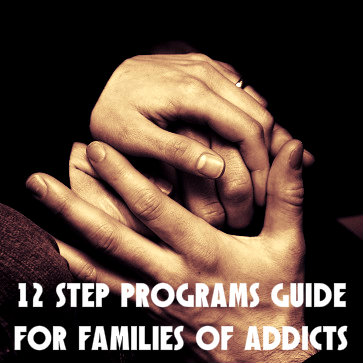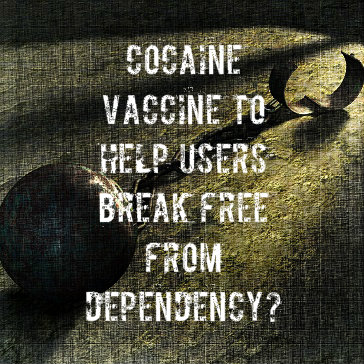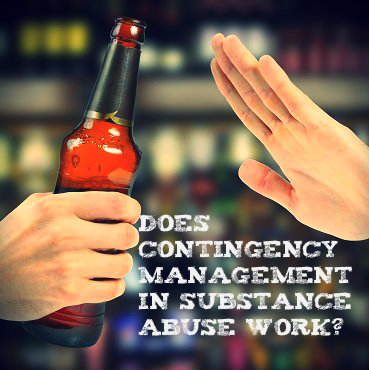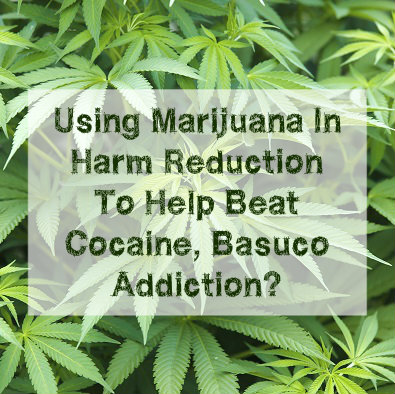If someone you care about is beginning to find recovery in a 12-Step Program, you may find yourself with a lot of questions. Media images of 12-Step Programs are a caricature, and from the outside, we have to admit the practices look a little strange. Is this some sort of cult? Yes, you’re happy the addict is sober and getting help, but is this how it has to be?
What Are The 12 Steps All About?
The 12-Step Program was a program of recovery developed by alcoholics for alcoholics and other addicts. The program is based upon 12 steps that help the addict to come to grips with his or her condition and establish the kind of spiritual life that will be the basis of a solid recovery and sobriety. The program recognizes addiction as a disease—an allergy of the body and an obsession of the mind. The Alcoholics Anonymous (AA) premise is based on the understanding that if someone is addicted to a particular substance or behavior, he or she will never again be able to consume that substance or engage in that behavior in a normal or healthy way. Total abstinence is the only solution.
 In most groups, members attend meetings regularly, read and study program literature, call and meet with other addicts or members in recovery and work regularly with a sponsor. Service to other addicts is of highest importance and seen as one of the keys to maintaining lasting sobriety.
In most groups, members attend meetings regularly, read and study program literature, call and meet with other addicts or members in recovery and work regularly with a sponsor. Service to other addicts is of highest importance and seen as one of the keys to maintaining lasting sobriety.
Aren’t 12 Step Programs A Little Overzealous?
It would appear that way to the outsider but, quite frankly, addiction is a little overzealous. For the non-addict it may be hard to fathom the prison and the punishment of being under the lash of a life-controlling addiction. As addicts, we have been so dominated by this cruel taskmaster that when we finally hit bottom we become willing to do whatever promises to rescue us.
And that proves to be quite a lot, as we soon find out once we’re in recovery. We believe that a powerful disease requires a powerful solution. In recovery we have to work as hard as the disease was working against us. But after a few years of sobriety many addicts come to see the program as the “easier, softer way,” when compared to the tyranny of addiction. When families see the beneficial results of program membership in their addict loved one, they too often become 12 Step supporters.
What Are The Roles Of Addict’s Loved Ones?
This will, to some degree, depend upon your relationship to the addict. For some recovering addicts, recovery needs to be a personal and private journey. They may not feel comfortable bringing others into their process, at least not in the beginning when they are yet fragile and convalescing. Don’t be offended by this; it isn’t personal. Recovery requires a lot of emotional work and some of us find we can better focus in the company of our program fellows, and perhaps apart from friends and family. Giving the addict the space he or she needs to heal can help to later guarantee closer relationships all around. Patience is needed.
It is wise, however, for the family of an addict to attend Al-Anon to learn more about the disease and how to deal with it. A family member’s addiction leaves scars on everyone. In Al-Anon you will come to better understand addiction, recovery and the 12-Step approach in addition to getting the support you need in healing from the wounds of addiction.
Read More On How 12 Step Programs Are Greatly Benefiting Teens
Buprenorphine is an opioid narcotic medication used to ease a reliance on stronger narcotics during recovery from active drug addiction. For specific reasons, doctors often combine the use of this medication with a secondary medication called naloxone. In a study published in November 2013 in the journal Addictive Behaviors, researchers from the State University of New York, Buffalo explored the reasons some people successfully complete buprenorphine/ naloxone treatment for opioid addiction, while others do not.
Dependence Risks Of Using Opioids
All opioid substances produce two primary effects when introduced into the human body: a highly pleasurable (euphoric) mental state and a significant reduction in the ability to feel pain. Doctors rely on the pain-relieving effects of prescription opioids to relieve serious forms of pain, but must constantly monitor the possibility for the onset of opioid dependence and the subsequent development of an opioid addiction. Since illegal or illicitly used opioids produce the same basic effects as suitably prescribed opioids, intake of these substances also comes with serious dependence and addiction risks.
How Buprenorphine Is Used For Addiction
 Buprenorphine is a significantly less powerful drug than the popular legal and illegal opioids of abuse. When an opioid addict switches over to buprenorphine use, he or she commonly experiences a reduction in euphoric and painkilling sensations, and also gradually reduces his or her level of physical dependence on narcotics in general. Doctors take advantage of these qualities by prescribing the medication during opioid addiction treatment. Instead of facing intense, potentially overwhelming symptoms of opioid withdrawal during the early stages of the treatment process, patients who switch over to buprenorphine typically avoid withdrawal and set themselves up for an increased likelihood of long-term addiction recovery.
Buprenorphine is a significantly less powerful drug than the popular legal and illegal opioids of abuse. When an opioid addict switches over to buprenorphine use, he or she commonly experiences a reduction in euphoric and painkilling sensations, and also gradually reduces his or her level of physical dependence on narcotics in general. Doctors take advantage of these qualities by prescribing the medication during opioid addiction treatment. Instead of facing intense, potentially overwhelming symptoms of opioid withdrawal during the early stages of the treatment process, patients who switch over to buprenorphine typically avoid withdrawal and set themselves up for an increased likelihood of long-term addiction recovery.
In the U.S., the manufacture and distribution of buprenorphine (and all other legal and illegal opioids) are regulated under a federal law called the Controlled Substances Act. This law specifically stipulates that doctors who give their patients buprenorphine during opioid addiction recovery must also either provide access to some sort of therapeutic counseling or direct their patients to other counseling resources. The counseling options most commonly offered to individuals receiving buprenorphine are a reward/punishment approach called contingency management (CM) and a gradual behavior modification therapy called cognitive behavioral therapy (CBT). However, in reality, not all buprenorphine recipients end up participating in a counseling program, even when they have access to such a program.
How Naloxone Is Utilized With Buprenorphine
Naloxone is not an opioid drug. In fact, it was originally developed as an anti-opioid medication, and has the ability to rapidly halt the effects of opioid intoxication inside the body. Doctors use the combination of buprenorphine and naloxone to reduce the chances that a person going through opioid addiction treatment will abuse buprenorphine instead of using that medication as directed. When the two medications are dissolved together under the tongue, enough buprenorphine reaches the bloodstream to help relieve opioid withdrawal; at the same time, the presence of naloxone limits buprenorphine’s impact and reduces its usefulness as a target of drug abuse. A prescription medication called Suboxone contains the proper proportions of buprenorphine and naloxone to achieve the desired treatment objectives.
Buprenorphine/Naloxone Opioid Addiction Treatment
In the study published in Addictive Behaviors, the SUNY Buffalo researchers used an examination of 356 opioid-addicted adults to explore the factors that contribute to the successful completion of addiction programs centered on the combined use of buprenorphine and naloxone. All of these adults were enrolled in a six-month treatment course that provided access to counseling resources. 127 of the participants successfully completed the course, while the remaining 229 participants did not.
After assessing the impact of a range of potential factors, the researchers concluded that the individuals who successfully completed a naloxone and buprenorphine opioid addiction treatment differed from those who did not complete treatment in two key ways. First, they took advantage of the counseling resources made available to them and established good records of counseling attendance. Interestingly enough, they also had histories of previous, significant physical injuries.
The authors of the study published in Addictive Behaviors don’t know for sure why prior experience of a physical injury increases the chances that an individual will complete buprenorphine/naloxone-based opioid addiction treatment. However, they do have a potential explanation. Previously injured people may have a history of exposure to chronic pain; in turn, use of buprenorphine during addiction treatment may help relieve that pain in addition to decreasing a reliance on the addictive effects of stronger opioids. It is the combination of withdrawal avoidance and ongoing pain reduction that may account for the link between prior injury and successful buprenorphine/naloxone treatment outcomes.
Read More About Opioid Related Disorders And Break Free From Addiction!
People addicted to opioid narcotics (and other drugs of abuse) often have additional mental health issues that significantly complicate their recovery during addiction treatment. In many cases, the situation is worsened by recovering addicts’ relatively infrequent use of available psychiatric services. In a study published in November 2013 in the journal Drug and Alcohol Dependence, researchers from Johns Hopkins University assessed the usefulness of an approach called contingency management (CM) in increasing recovering opioid addicts’ willingness to participate in psychiatric treatment. The researchers found that appropriate use of contingency management can significantly boost program participants’ attendance for psychiatric services.
Opioid Addiction And Mental Illness
 Like other forms of drug and alcohol addiction, opioid addiction is officially classified as a form of mental illness by the American Psychiatric Association. This is true because continued, excessive use of addictive substances literally alters the function of the human brain, and thereby fosters a range of serious, dysfunctional changes in everyday behavior. In addition, opioid addictions (and other substance addictions) often appear at the same time as other forms of diagnosable mental illness such as depression, schizophrenia or anxiety disorders.
Like other forms of drug and alcohol addiction, opioid addiction is officially classified as a form of mental illness by the American Psychiatric Association. This is true because continued, excessive use of addictive substances literally alters the function of the human brain, and thereby fosters a range of serious, dysfunctional changes in everyday behavior. In addition, opioid addictions (and other substance addictions) often appear at the same time as other forms of diagnosable mental illness such as depression, schizophrenia or anxiety disorders.
Numerous factors help explain the overlap between addiction and these mental illnesses, including the ability of substance abuse/addiction to trigger the onset of additional illness and the ability of non-substance-based mental illnesses to increase the risks for involvement in substance use. Research also indicates that substance addiction and other forms of mental illness share several important common risk factors that increase their likelihood of appearing together.
Contingency Management Basics
Contingency management is a behavior modification technique that uses rewards (and, in some cases, punishments) to bring about desired results in a drug treatment program or other therapeutic setting. One common form of this approach, called voucher-based reinforcement or VBR, uses the distribution of vouchers for services or material goods to encourage treatment compliance.
Another form of CM, called prize incentives contingency management, motivates compliance by giving patients a chance to win cash with every significant step toward active treatment participation. Contingency management is used in programs that treat addiction to substances such as opioid narcotics, marijuana, amphetamine, methamphetamine, alcohol and nicotine. Some programs use the technique to encourage abstinence during the course of recovery. Others use it to encourage participation in the psychiatric programs that address other forms of mental illness in people involved in substance addiction treatment.
Addicts Willing To Remain In Drug Rehab With Contingency Management
In the study published in Drug and Alcohol Dependence, the Johns Hopkins University researchers used an assessment of 125 adults going through outpatient treatment for opioid dependence to gauge the effectiveness of contingency management in improving the willingness to receive psychiatric services during participation in an addiction recovery program. Half of these individuals received $25 vouchers for each week of full participation in a 12-week course of psychiatric treatment. The remaining adults had access to the same psychiatric treatment, but did not receive vouchers or any other form of reward for treatment attendance. The researchers measured each group’s level of attendance after each month of the program.
After reviewing their findings, the researchers concluded that, compared to an approach that doesn’t employ contingency management, use of voucher-based CM nearly doubles the level of psychiatric treatment attendance after one month of treatment. In addition, use of vouchers more than doubles the level of attendance after two months of treatment and after three months of treatment. People who receive vouchers for psychiatric services remain in opioid addiction treatment just as often as people who don’t receive vouchers. They also successfully avoid using opioid drugs with equal frequency.
Contingency Management’s Clear Benefits In Addiction Programs
The authors of the study published in Drug and Alcohol Dependence believe that the use of contingency management techniques provides clear benefits for encouraging the use of psychiatric services in opioid addiction programs. However, they note that their research only looked at psychiatric services delivered to patients in a purposeful, coordinated manner during the course of addiction treatment.
Services delivered in other ways may or may not receive the same attendance boost from the contingency management approach. The authors also note that the specific type of psychiatric treatment offered in any given program may have a considerable impact on the usefulness of CM. In addition, program managers may need to alter or modify their use of CM in order to meet the specific challenges faced by their patient clientele.
Read More About Drug Rehab Treatment And Contingency Management
 More than 22 million people in the United States are dealing with drug abuse, and the yearly healthcare dollars spent fighting this problem amount to more than 180 million. Cocaine abuse is one of the largest and most expensive problems under the larger umbrella of drug abuse, resulting in the most emergency room visits of any illicit drug.
More than 22 million people in the United States are dealing with drug abuse, and the yearly healthcare dollars spent fighting this problem amount to more than 180 million. Cocaine abuse is one of the largest and most expensive problems under the larger umbrella of drug abuse, resulting in the most emergency room visits of any illicit drug.
Unlike heroin addiction, which can often be treated successfully with a substitute drug called methadone, cocaine addiction has no such handy substitute available. But a small group of scientists have been working on another potential weapon for fighting cocaine abuse: a cocaine vaccine.
The idea for a drug abuse vaccine has been around for more than a quarter of a century. Currently, there are two major research teams actively engaged in developing a vaccine for clinical trials. These research groups are led by Kim Janda, Ph.D, of the Scripps Research Institute, and Thomas Kosten, M.D, of the Baylor College of Medicine. In 2010, Kosten’s team ran the first ever late-stage cocaine vaccine trial, with their vaccine TA-CD.
The Vaccine Principle
Vaccines have been in existence for hundreds of years, perhaps even more than 1,000 years. They operate in a very simple way: introducing a tiny amount of a disease (often in weakened or killed form) or something chemically similar to a disease into a person’s bloodstream so that the immune system is able to identify the invader and create antibodies. Once the human immune system learns to create antibodies for a particular disease, it can do so quickly again if the disease reappears.
However, a drug like cocaine is different from a disease-causing microbe. Cocaine in the bloodstream is much smaller than a microbe, and essentially invisible to the human immune system. As a result, recent approaches to the creation of a cocaine vaccine have involved attaching the vaccine to a virus. This helps the immune system learn to identify the substance and to destroy it.
Success Of Cocaine Vaccine And Questions
Both Kosten’s vaccine, TA-CD, and Janda’s vaccine, known as GNE, have had some measure of success in clinical trials. Janda and his research partner, Ronald Crystal of Weill Cornell, reported that GNE showed an impressive ability to destroy cocaine in the bloodstreams of monkeys. Kosten found similarly effective results from his human trial of TA-CD.
However, questions remain as to whether simply destroying cocaine in a person’s bloodstream is really an effective way of fighting drug abuse. Unlike measles or smallpox, two diseases almost completely eradicated in the first world because of vaccines, drug addiction is not simply a physical illness. Drug abuse can have serious physical effects, but addiction is a brain disease.
In the late-stage trial by the Baylor team, the results showed that the destruction of cocaine in addicts’ bloodstreams did not eliminate or reduce cravings for the drug. In some cases, the addicts in the trial took many times their usual dose of cocaine in an attempt to achieve the high that they were craving. For some subjects, this desperate search for a high was financially disastrous.
Addiction Prevention vs. Addiction Treatment
The purpose of a true vaccine is the prevention, rather than the treatment, of a serious disease. Although a cocaine vaccine may eventually be a successful tool for treating cocaine addiction, it may be even more effective when used as other vaccines are used: to prevent the initial development of a disease.
For individuals who are not addicted to cocaine, a successful drug vaccine could prevent them from ever experiencing any of the physical effects of the drug, including the chemical high that creates an addictive feedback loop in the human brain’s reward centers. This would prevent people from developing a dependency on the drug and suffering from cravings.
However, with so many people in the United States suffering from cocaine addiction, treatment remains a high priority for the scientists working on a vaccine. While an effective vaccine may never be a silver bullet that cures cocaine addiction on its own, it does have great potential as part of a larger treatment program. For example, a vaccine could essentially ensure addicts’ sobriety by destroying any cocaine that enters the system, even if they relapse.
Addiction is a complicated disease. For those of us who have never had an addiction, it can be easy to wonder why addicts can’t seem to make the decision to stop using and then do it. There are complicated brain chemical pathways that are affected by drugs and alcohol that lead to addiction and that make it almost impossible to stop using. Modern research has uncovered much of the role of the brain in addiction, but more recently has found that the immune system is also important.
The Immune System And The Brain
 Your body’s immune system is a complex network of different types of cells that are dedicated to protecting you from foreign invaders that cause sickness. Many of those immune cells live in the brain. These are called glial cells and they work alongside your neurons, or brain cells. The brain cells and immune cells that work together to regulate the responses of the immune system are called collectively, the neuroimmune system. This system keeps the brain healthy and mediates communication between the immune system and the central nervous system.
Your body’s immune system is a complex network of different types of cells that are dedicated to protecting you from foreign invaders that cause sickness. Many of those immune cells live in the brain. These are called glial cells and they work alongside your neurons, or brain cells. The brain cells and immune cells that work together to regulate the responses of the immune system are called collectively, the neuroimmune system. This system keeps the brain healthy and mediates communication between the immune system and the central nervous system.
Addiction’s Effects On The Neuroimmune System
Parts of the neuroimmune system are activated by various factors. Stress is one factor, which is why the feeling of being stressed can actually make you physically sick. Alcohol and drugs also trigger responses in the neuroimmune system. The responses can lead to disrupted decision making. This helps to explain why addicts make choices about using even when doing so is bad for them.
The response of the neuroimmune system to drugs and alcohol also changes a person’s affect and causes feelings of depression. Again, these feelings are characteristic of addiction. Researchers have even found that people with certain genetic variations in their neuroimmune system are more likely than others to succumb to addiction.
Innovative Addiction Treatments
With the increased understanding of how the immune system in the brain impacts addiction, researchers are able to come up with new treatments for this devastating disease. One such possible treatment may help addicts who use opioids like heroin and prescription painkillers. Studies have found that morphine, an opioid drug, binds to a certain immune system receptor that changes the dopamine pathway in the brain.
Dopamine is the brain chemical that is released when we feel something pleasurable. Drugs release huge floods of dopamine, which plays a role in developing addictions. The researchers hope that if they can block the immune receptor with a medication, they can stop the release of dopamine when someone uses an opioid. With no pleasurable sensation, there would be no addiction.
Methamphetamine is another seriously addictive drug that can be just as hard to quit as opioids. Research has shown how the drug negatively impacts the immune system of the user, so new studies have focused on targeting the immune system for treatment medications. A drug being developed for a variety of immune diseases may also help meth addicts. The drug reduces the immune response in the brain, which could help meth addicts feel better. One major hurdle to quitting is that the users feel awful when they give up meth. With the new medication, they may feel better, and less inclined to going back to using.
Other researchers have tackled cocaine addiction by working with the immune system. The new treatment is actually a vaccine. The researchers who developed it created a vaccine that would target cocaine and treat it as if it were an invader like a virus or bacterium. After being injected with the vaccine, mice in laboratory experiments showed an immune response that tackled any cocaine in the body. The result was that the mice did not get a high from cocaine. If the vaccine works in human trials, it could help addicts stop using. If they get no high, there will be no reason to use the drug.
The exciting field of addiction and the immune system is coming up with new information about the disease of addiction every day. With this new knowledge, researchers are able to create treatments that are medically- and evidence-based that may truly help people recover from addiction.
Choosing the right alcohol or drug rehab treatment strategy can be a challenge for someone still struggling with addiction. One of the most confusing aspects for many is simply figuring out which therapy does what. It’s critical information because it will guide you toward making the best decisions regarding treatment. This article will help you understand the treatment approach known as contingency management (CM) and how it helps addicts during recovery.
Contingency Management Basics
 Contingency management is based on a simple principle: behavior that is rewarded is behavior more likely to be repeated in the future. It’s a principle we see all the time in everyday life. For example, a teen may earn an allowance for taking on extra chores, or a boss may award her employees with bonuses for excellent performance.
Contingency management is based on a simple principle: behavior that is rewarded is behavior more likely to be repeated in the future. It’s a principle we see all the time in everyday life. For example, a teen may earn an allowance for taking on extra chores, or a boss may award her employees with bonuses for excellent performance.
Although it can be used to treat alcohol abuse, CM is most commonly employed as to treat drug abuse and addiction. The therapy is also used by health professionals to help people overcome a range of challenges, including weight loss, exercise motivation, and cigarette smoking. Additionally, contingency management is sometimes utilized to increase the likelihood a patient will take medication as directed.
How Exactly Is CM Used In Substance Abuse Treatment?
During substance abuse treatment, CM reinforces positive, drug-free behavior with explicit, tangible rewards. One of the most common ways to use this reinforcement is to allow addicts to earn vouchers for goods and services, like movie tickets, retail goods, sports equipment, or electronics, after they’ve submitted a specified number of drug-free urine samples. In some programs, the reward has a fixed dollar amount, such as $25. Other treatment plan rewards may increase in value the longer the drug abuser stays clean. For example, a voucher may hold a starting value of $10 and increase by $2 for each negative sample the addict provides. The goal is to encourage substance abusers to remain abstinent during outpatient treatment.
Why CM Promotes Healthy Behaviors In Addicts
In addition to promoting abstinence, CM can be used to promote other healthy behaviors in addicts. Addiction therapists may reward patients for attending a certain number of 12-step meetings or showing positive behaviors during drug rehab treatment. One program offered housing and behavioral treatment to homeless cocaine addicts in exchange for staying drug-free [1].
Another form of contingency management involves medication for methadone patients. Recovering addicts may be permitted to take methadone doses home if they increase positive behaviors or cease negative ones. A patient, for instance, could earn the right to take home one dose a week after submitting a specific number of drug-negative urine tests.
Contingency management can be an appropriate treatment for many addicts, however, it’s considered especially helpful for those in high-risk groups. For example, this drug rehab treatment has been used to reduce dangerous injection-related behaviors, which increase the risk of acquiring HIV and other bloodborne diseases [2]. CM has also been used successfully to treat pregnant women with addiction. One review of numerous studies concluded that contingency management was more effective at keeping pregnant women in drug treatment than motivational interviewing, another addiction therapy [3].
Effectiveness Of Contingency Management For Drug Abuse
Contingency management has proved to be an effective treatment for substance abuse disorders. One review of 47 studies found that incorporating it into treatment improved drug abstinence rates during recovery. However, it also suggested that contingency management may be more effective for those with opiate or cocaine addiction than for those with multiple drug addictions [4].
Research also suggests CM is useful for keeping addicts in outpatient therapy. Typically, many substance abuse patients miss scheduled appointments; one estimate puts the number as high as 60%. However, in one study, researchers gave addicts who attended scheduled group therapy the chance to draw from a prize bowl, which contained vouchers for prizes ranging from $1 to DVD players. Recovering addicts were more likely to attend weekly sessions when reinforced with contingency management than when they were not [5]. Another study discovered that 84% of outpatient substance abusers receiving vouchers stayed in treatment over 8 weeks, while only 22% of non-voucher patients did so [6].
Contingency Management Drug Addiction Treatment Plan
Like many drug rehab treatment options, CM is not intended to be used as a sole therapy. It’s often used in conjunction with other addiction treatments. For example, cognitive-behavioral therapy (CBT) is one approach a therapist could pair with contingency management. During CBT, the alcoholic or drug addict will identify the negative behaviors and emotions that contribute to addiction.
The cost of contingency management can prevent some substance abuse clinics from using this therapy. Some evidence suggests that CM is not as effective when the value of the vouchers is too low [7]. The cost of vouchers attractive enough to change addiction behavior can quickly add up. In one study, addicts received vouchers worth more than $1,000 over the course of treatment [8].
Some experts have raised concerns that incentives, such as those that allow substance abusers the opportunity to draw a random prize from a bowl, increase the risk for pathological gambling. However, prize drawings in CM have not been shown to promote excessive gambling, according to the National Institute on Drug Abuse [9].
Critics Of Contingency Management For Drug Rehab Treatment
Contingency management is not without critics. Some opponents of this approach assert that contingency management amounts to bribing drug users to stay clean. Another concern of critics is that some addicts will deceive treatment professionals by providing clean urine samples that do not belong to them, thus collecting the incentive without meeting their own obligation to stay abstinent. Additionally, those against this approach argue that CM does not directly address underlying issues that contribute to substance abuse. However, it’s important to note that contingency management is often paired with other treatments developed to produce long-term behavioral changes.
Drug rehab treatment may be one of the most important decisions you’ll ever make. Speak with an addiction professional to learn if contingency management is the right choice for you.
References:
[1] http://www.sciencedirect.com/science/article/pii/S0376871600800083
[2] http://www.ncbi.nlm.nih.gov/pmc/articles/PMC2271179/
[3] http://www.ncbi.nlm.nih.gov/pubmed/17943878
[4] http://onlinelibrary.wiley.com/doi/10.1111/j.1360-0443.2006.01581.x/abstract
[5] http://www.ncbi.nlm.nih.gov/pmc/articles/PMC2606605/
[6] http://psycnet.apa.org/journals/ccp/68/2/250/
[7] http://www.ncbi.nlm.nih.gov/pubmed/16445548
[8] http://ajp.psychiatryonline.org/article.aspx?articleID=174754
[9] http://www.drugabuse.gov/publications/principles-drug-addiction-treatment-research-based-guide-third-edition/evidence-based-approaches-to-drug-addiction-treatment/behavioral-0
What Is Harm Reduction?
Harm reduction is a controversial technique used to help treat addicts, particularly drug addicts. The philosophy behind this method of treatment is to help an addict use safely, rather than forcing him to stop using. By aiding addicts, the caregivers reduce the potential for harm. Although using illegal drugs is always harmful, doing it in a safe environment helps to prevent overdose deaths and the spread of disease. Proponents of harm reduction believe that once a user is in a safe environment, he can make the choice to quit.
 The method of harm reduction is not new. It has been around for decades and begun with the practice of giving heroin addicts a substitute drug called methadone. Other harm reduction programs include handing out clean needles to heroin users and providing a safe place to use. Critics of the technique feel that harm reduction only encourages addicts to keep using. In spite of criticisms, harm reduction continues to be used, not just in the US, but in other countries as well. In Colombia, officials are trying harm reduction treatment with cocaine addicts, and finding success.
The method of harm reduction is not new. It has been around for decades and begun with the practice of giving heroin addicts a substitute drug called methadone. Other harm reduction programs include handing out clean needles to heroin users and providing a safe place to use. Critics of the technique feel that harm reduction only encourages addicts to keep using. In spite of criticisms, harm reduction continues to be used, not just in the US, but in other countries as well. In Colombia, officials are trying harm reduction treatment with cocaine addicts, and finding success.
Colombia – Cocaine Capital Of The World
Colombia is the cocaine capital of the world, producing more of the illegal drug than anywhere else on the planet. Cocaine comes from a plant native to South America called coca. The leaves of this plant naturally contain cocaine, which is a psychoactive stimulant. For many years, the natives of the area have chewed coca leaves for the high, but have also used them for medicinal purposes.
To get the cocaine out of the leaves, drug manufactures must go through a multi-step chemical process and end up with the white powder that is sold in the illegal marketplace. Most of this cocaine comes out of Colombia and is smuggled into the United States. In Colombia and particularly in Bogota, the capital, there is a real problem with addicts who use a base form of cocaine. It is a low-quality, low-purity form of the drug called basuco. It is an intermediate product in the process of making cocaine and it often contains residues of the solvents used, like kerosene. It may also have fillers like crushed bricks or ashes. Basuco is even more addictive than cocaine and is a rising problem in Bogota.
Harm Reduction for Basuco Addicts
Basuco is so addictive and so hard a habit to kick that the public health officials in Colombia have taken action and are using harm reduction. They have created controlled consumption facilities where addicts are given increasingly smaller doses of basuco and given marijuana instead. The idea is to help addicts stop using this very dangerous drug in a controlled manner. Marijuana is used like a substitute. Although it is a drug, it is much safer than basuco.
Addiction experts who espouse a traditional view of treatment believe that addicts must give up a drug completely and refrain from using any other substance. Increasingly, this traditional type of treatment is being proven ineffective. To fill the gap, harm reduction techniques are emerging around the world. The harm reduction programs for basuco addicts in Bogota are already helping people.
Using Marijuana For Harm Reduction
The philosophy of harm reduction, in itself, is controversial. Adding marijuana to the technique adds another level to the debate. To many staunch traditionalists, giving an addict another drug is simply wrong and in opposition to their beliefs about addiction. The facts, however, support this technique. Research investigating the use of marijuana for addicts using prescription painkillers has turned up positive results. The medical marijuana used by these people helped to reduce side effects from the painkillers, helped to manage pain, and helped to reduce the symptoms of withdrawal when the painkillers were taken away.
Other studies also showed evidence that using marijuana could help addicts. One study demonstrated that smoking small amounts of marijuana aided heroin addicts by keeping them in their treatment programs. Another study indicated that cocaine users in rehab who also used marijuana moderately were more successful at quitting than those who never smoked marijuana.
How Harm Reduction Helps
The idea of using drugs to cure addiction may seem radical. Certainly, the philosophy of giving addicts their drugs of choice in a safe environment is not without controversy. As traditional treatments fail to help addicts, however, these other options must be considered. The research and the results are very promising. Harm reduction and the use of marijuana are already helping cocaine addicts, and could help others as well.
07 Oct 2013
Naltrexone Limits Drug Cravings, Urges
It can feel overwhelming to make the necessary decisions regarding drug rehab treatment. You likely have many questions, from how long treatment will last to whether rehab will work. One of the decisions you may need to make is whether the medication naltrexone is the right therapy for you or an addicted loved one.
Naltrexone is a prescription drug used to treat both alcoholism and opioid addiction. Common brand names include Depade and ReVia. A once-a-month injectable form, called Vivitrol, is also available. This drug is often prescribed for a period of time ranging from a few months to a year. It may also be prescribed if a recovering drug addict starts experiencing cravings again or will be exposed to an environment where the urge to use will be intense.
How Naltrexone Helps Drug Cravings
Opioids, like heroin, oxycodone and hydrocodone, are drugs that slow the body’s central nervous system activity and induce feelings of pleasure. Naltrexone is an opioid receptor antagonist, which blocks the effects these drugs have on the brain. In other words, the drug takes away the intense high. The medication does not stop a person from doing drugs when he or she is actively using. It also will not stop or relieve withdrawal symptoms. However, its ability to block the euphoric high makes substance abuse less attractive to the addict.
Some studies have shown naltrexone to be effective at helping addicts prevent relapse. However, it’s important to note that the medication was used in conjunction with other addiction treatments, including cognitive behavioral therapy. In one study, naltrexone was combined with counseling and addiction education for significant others to increase the addicts’ success rates.
Naltrexone is sometimes used in a process called rapid detoxification, which, as the name implies, is a method of speeding up detox. This must be done under strict medical supervision due to the risks involved. It is performed while the addict is under general anesthesia or sedation.
Before Taking Naltrexone
The drug’s primary use, however, is to prevent recovering addicts from experiencing the high that reinforces their continued use. This effective drug rehab treatment medication cannot be taken if a person is still using opioid drugs. As a general rule, an addict needs to be clean for at least seven to 10 days before starting naltrexone therapy. It’s common for the prescribing physician to order blood tests to ensure that there’s been no recent drug use.
Before taking this medication, addicts must go through detoxification if they haven’t already stopped using. Once they are clear of opioids, a physician will prescribe a low dose that will then be adjusted as necessary. Naltrexone should be taken on the prescribed schedule: daily, every other day, or every third day. It is often delivered in a clinical setting, but some addicts may be able to take it at home if supervised by a responsible family member.
Like any prescription medication, naltrexone does carry the risk of side effects. Most of the potential side effects are relatively mild. Users have reported headaches, drowsiness, upset stomach, vomiting, diarrhea and muscle aches. The prescribing physician will provide a complete list of side effects and may be able to offer tips for reducing them. Naltrexone should not be taken by those with liver disease, acute hepatitis, or kidney disease, or women who are pregnant or breastfeeding.
Because this medication for drug addiction prevents opioids from working, it’s important to let your physician and any other health care providers know that you cannot take any opioid-containing medications. These include certain pain medicines, diarrhea medications and cough syrups.
Disadvantages of Naltrexone
While naltrexone can be an effective tool for drug rehab treatment, there are drawbacks. For instance, it works only when taken exactly as prescribed. Addicts with the urge to use often stop taking the drug or skip doses so they can use again. Others forget to take it. One study showed that heroin addicts who were supervised almost daily while taking the medication had better recovery rates than those who were supervised only three or four days a week.
Some addicts are hesitant to take it because they prefer to be entirely drug free. However, it’s important to remember that naltrexone is not a narcotic; nor is it a drug substitute therapy, like methadone. You can’t become addicted to naltrexone or get high from it. Using this medication is much like using a prescription to control other chronic disorders, such as diabetes or high cholesterol.
There’s another potential danger linked to the use of naltrexone. Since the drug blocks the high that comes from opioid drugs, some addicts may try to “get around” the medication and attempt to get high by taking larger-than-typical hits of their drug of choice. This is extremely dangerous because it can lead to overdose and, potentially, death.
Naltrexone And Addiction Treatment
This use of naltrexone as part of drug rehab treatment is not a magical cure; it can’t eliminate your addiction by itself. Rather, it’s just one more tool in a long-term strategy for recovery. Think of this medication as a way to clear your mind so you can build the healthy physical, emotional and cognitive foundation needed to maintain an addiction-free life.
As part of your treatment, you will be required to participate in individual or group addiction counseling. A trained therapist will help identify the factors that have contributed to your addictive behavior. Once those triggers are established, you will work to find healthier ways to cope with those emotions and behaviors.
Addiction professionals may recommend other tools as well. A support group, often in the form of a 12-step program, can be a powerful treatment strategy. By working with others who have experienced the same struggles, you will learn new ways to maintain recovery. Just as importantly, a good support group provides connections with others who understand exactly the challenges you are experiencing.
Finding support from family and friends is also crucial to recovery. Your addiction treatment team may recommend family or couples therapy to address relationship issues that contribute to your drug abuse. You’ll learn to identify sources of conflict as well as develop strategies for resolving them in a healthy and constructive way.
Naltrexone can be one part of a successful drug rehab treatment strategy. Talk to an addictions specialist to determine if this medication will help you on your road to recovery. It may be the extra tool you need to build a life free from the strain and dangers of addiction.



